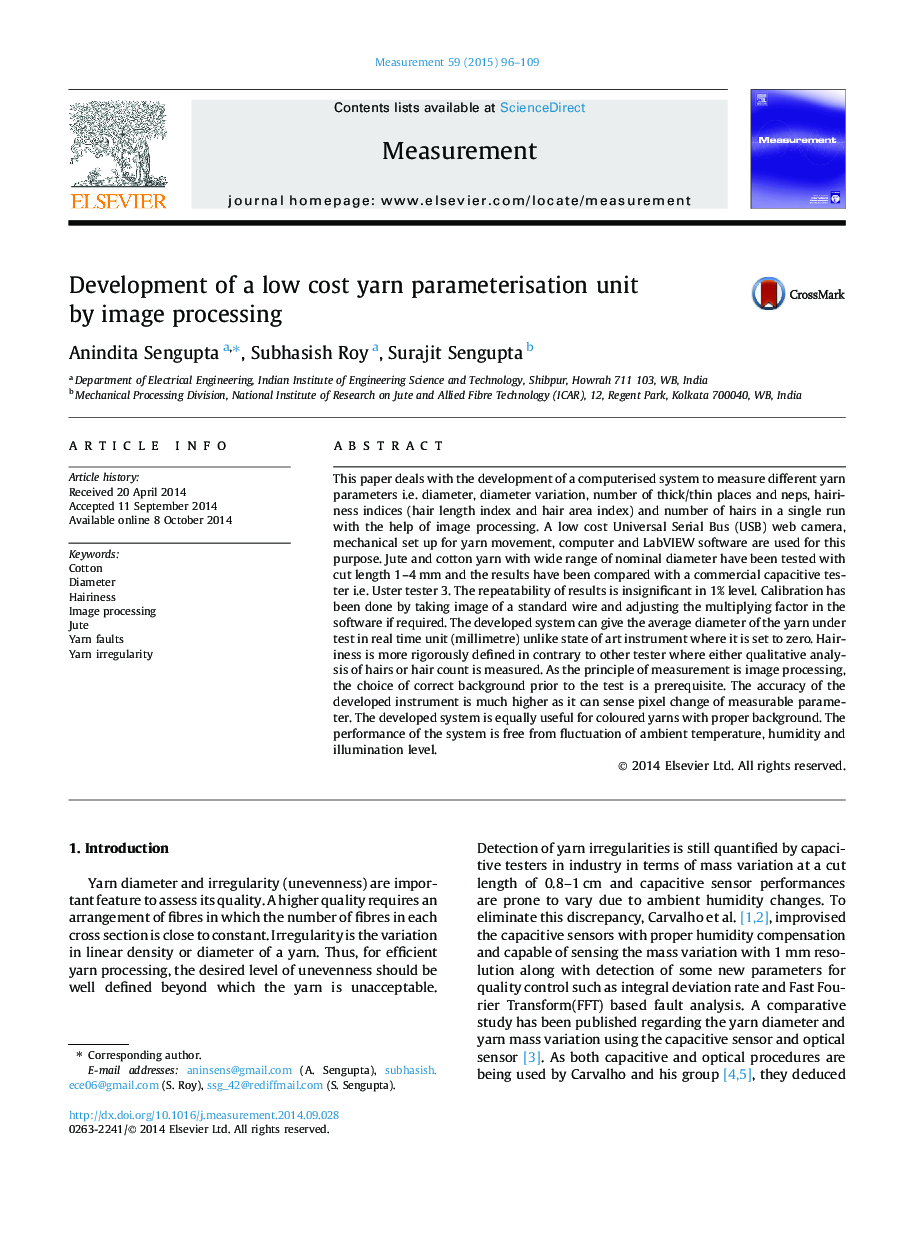| Article ID | Journal | Published Year | Pages | File Type |
|---|---|---|---|---|
| 731205 | Measurement | 2015 | 14 Pages |
•Characterize the staple yarn in terms of diameter, yarn faults, hairiness indices and number of hairs in a single run.•Measure yarn parameters in moving state.•Alter the resolution of the instrument by varying the number of slices cut from a single snap using software only.•Furnish diameter variation excluding hairs as irregularity measure.•Develop tester free from electromagnetic interference and/or radio frequency interference.•Develop instrument in much lower price than its commercial counterpart.
This paper deals with the development of a computerised system to measure different yarn parameters i.e. diameter, diameter variation, number of thick/thin places and neps, hairiness indices (hair length index and hair area index) and number of hairs in a single run with the help of image processing. A low cost Universal Serial Bus (USB) web camera, mechanical set up for yarn movement, computer and LabVIEW software are used for this purpose. Jute and cotton yarn with wide range of nominal diameter have been tested with cut length 1–4 mm and the results have been compared with a commercial capacitive tester i.e. Uster tester 3. The repeatability of results is insignificant in 1% level. Calibration has been done by taking image of a standard wire and adjusting the multiplying factor in the software if required. The developed system can give the average diameter of the yarn under test in real time unit (millimetre) unlike state of art instrument where it is set to zero. Hairiness is more rigorously defined in contrary to other tester where either qualitative analysis of hairs or hair count is measured. As the principle of measurement is image processing, the choice of correct background prior to the test is a prerequisite. The accuracy of the developed instrument is much higher as it can sense pixel change of measurable parameter. The developed system is equally useful for coloured yarns with proper background. The performance of the system is free from fluctuation of ambient temperature, humidity and illumination level.
